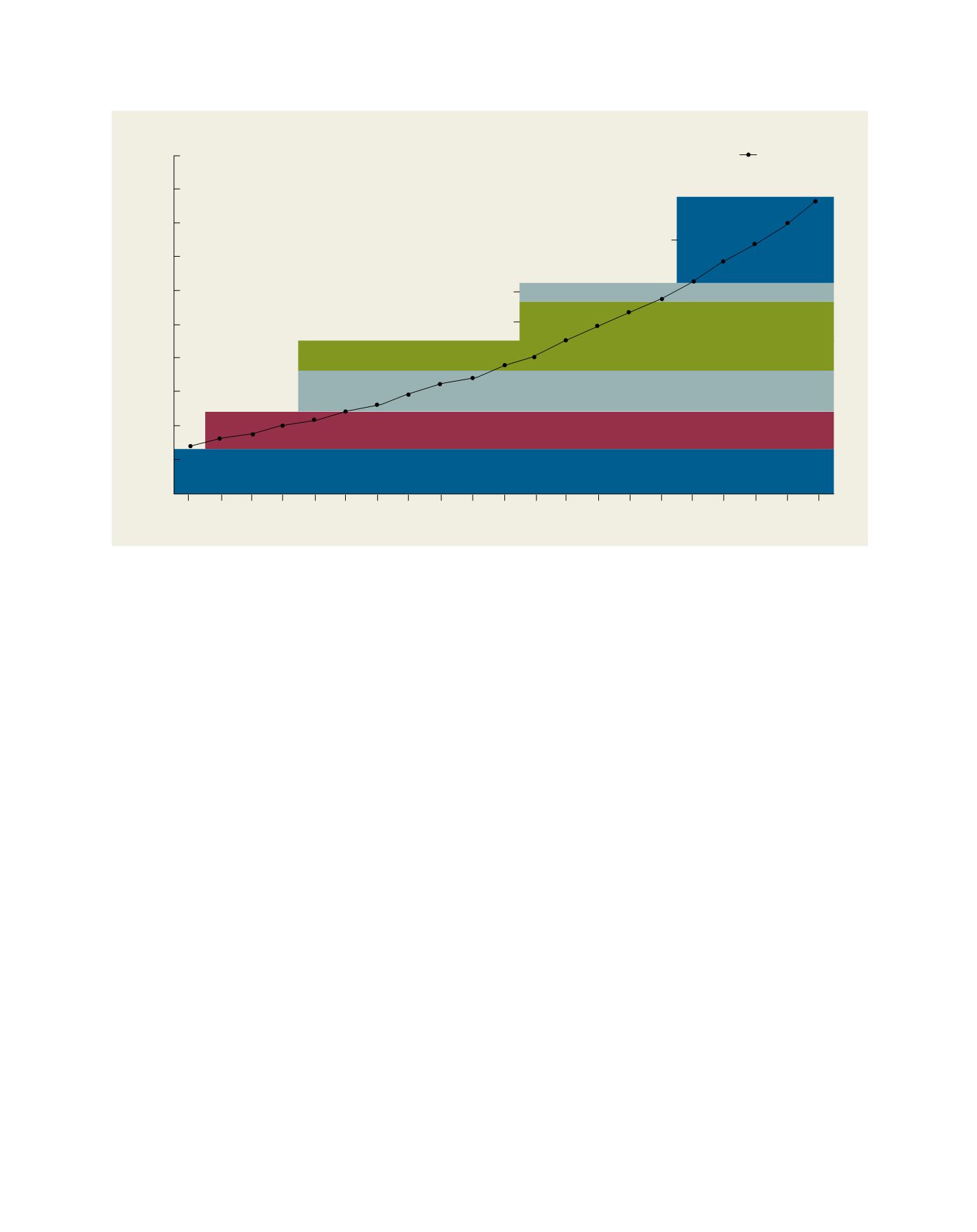

[
] 281
E
conomic
D
evelopment
and
W
ater
in huge public health risks. Finally, there is cascading use of waste-
water for irrigation of urban agriculture, a common practice in many
cities in sub-Saharan Africa. The cascading use of wastewater has the
advantage that the scarce water resources are used multiple times,
but it increases public health risks by spreading the pathogens in
the wastewater. The integrated framework designed for sub-Saharan
Africa must explore solutions for safe cascading use of wastewater
for urban agriculture.
Because the infrastructure is often different in sub-Saharan Africa
than in developed countries, many water demand management meas-
ures that are applicable in the latter cannot be implemented in these
developing countries.
4
An integrated urban water framework designed
specifically for African cities must recognize these differences and the
limitations they create. For example, many African cities have a very old
water distribution infrastructure which creates leakage levels of 30-50
per cent. Under these conditions, leakage management programmes
provide a huge opportunity for IUWM in African cities. Unfortunately,
when the water supply is intermittent and distribution pressures are
low, many water-saving devices for toilets, bathrooms and kitchens
may not be effective. Further, in water-scarce conditions where the
population already uses water efficiently, the potential for further water-
saving measures is limited. An IUWM framework designed specifically
for African conditions must select technologies which are suitable for
the conditions in African cities. For example, treatment technologies
which could not work with intermittent energy supply (such as acti-
vated sludge) are not applicable and more robust technologies such as
stabilization ponds should be applied.
By improving the understanding of the highly complex interactions
between the different parts of the African urban water cycle, an IUWM
framework designed for Africa facilitates a structured and integrated
analysis and supports an integrated decision-making process.
IUWM strategies for Arua
Although the integrated framework may seem
straightforward, its application on the ground is chal-
lenging. The new integrated approach to urban water
management has been applied in a recently prepared
feasibility study for Arua, Uganda, funded by the
World Bank.
5
Comparable concepts are proposed
for feasibility studies in Mbale, Uganda and Nairobi,
Kenya. Arua is a rapidly emerging town located in
northern Uganda. It is experiencing a critical short-
age of water and the main water source, the Enyau
River, is affected by the increasing water demands
of upstream users, exacerbating the water shortage
problem. The current water supply is not sufficient
to meet the existing demand, and with an estimated
population growth of up to 200 per cent in the next
20 years the problem will increase. In addition to
the water shortage problem, Arua also lacks adequate
sanitation provisions, with dysfunctional pit latrines,
open defecation and untreated wastewater posing
both health risks and water pollution risks. In order
to cope with these challenges, a feasibility study for
future water supply and sanitation was developed
applying the integrated framework.
Based on the integrated framework, the feasi-
bility study proposes that in Arua surface water,
groundwater, artificial aquifer recharge and recycled
wastewater (grey and black) should all be consid-
ered as potential water sources, resulting in increased
water security (security by diversity). This strategy
includes changing the way we think and the way we
20,000
18,000
16,000
14,000
12,000
10,000
8,000
6,000
4,000
2,000
0
2012
2013
2014
2015
2016
2017
2018
2019
2020
2021
2022
2023
2024
2025
2026
2027
2028
2029
2030
2031
2032
Surface water – Anyau River (existing operating capacity)
Groundwater
Surface water (upgrading abstraction from Enyau River)
Greywater (Cluster 6, 8 and 9)
Greywater (Cluster 1, 2 and 7)
Waste water reuse (Cluster 3, 4 and 5)
Surface water (Dam at Enyau River)
= Water demand
Estimated water demand and proposed water resources for Arua
Source: Vairavamoorthy et al, 2012


















